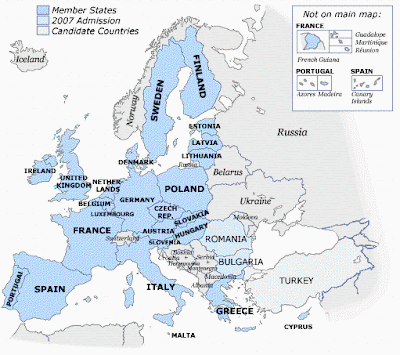Wednesday, March 18, 2009
What You Should Know About Trading Bloc?
Trade bloc refers to some form of agreement between member countries to reduce or eliminate barriers to trade among themselves. There are several types of trading bloc, all classified according to the extent of cooperation & interrelationships
The evolutionary path for trading blocs is:
(1) Free Trade Area
Member countries establish an agreement to reduce or eliminate custom duties, tariffs & non-tariffs barriers among themselves, so as to promote a freer trade. However, all these countries are still free to maintain individual tariffs against non-members. Therefore, this loophole is subject to manipulation. A country may first export to a country with lowest external tariff, before transporting the goods to a member country which actually has higher external tariffs. By doing so, they can avoid paying tariffs
To prevent this, member countries imposed local content law. In order for foreign goods to be considered ‘local’ & thus not subject to duties, certain % of the parts must be sourced locally. The intention is actually encouraging foreign firms setting up production facilities in these FTA. E.g. NAFTA (North American Free Trade Agreement) with members of US, Mexico & Canada
(2) Custom union
Happens when member countries add a common external tariff onto the provision of free trade area. The intention is to obviously prevent the evasion of tariffs by non-member. E.g. ASEAN (Association of South East Asian Nation)
(3) Common Markets
Once member countries have achieved higher level of cooperation & their economies began to complement one another, they can proceed to common markets. Here not only common external tariffs are applied, but also the elimination of all restrictive trade barriers & allowing free movement of capital & labour. So that’s why Santander bank (Spain) can buy over UK’s bank like Abbey International. Also, a Hungarian is free to look for job in UK
(4) Monetary union
It is the fourth stage of economic integration. Here member countries will adopt common currency & common Central Bank. The well known example is European Union. Now it has 17 official members, with more than half a billion of populations with combined GDP largest than that of America
Subscribe to:
Post Comments (Atom)

No comments:
Post a Comment